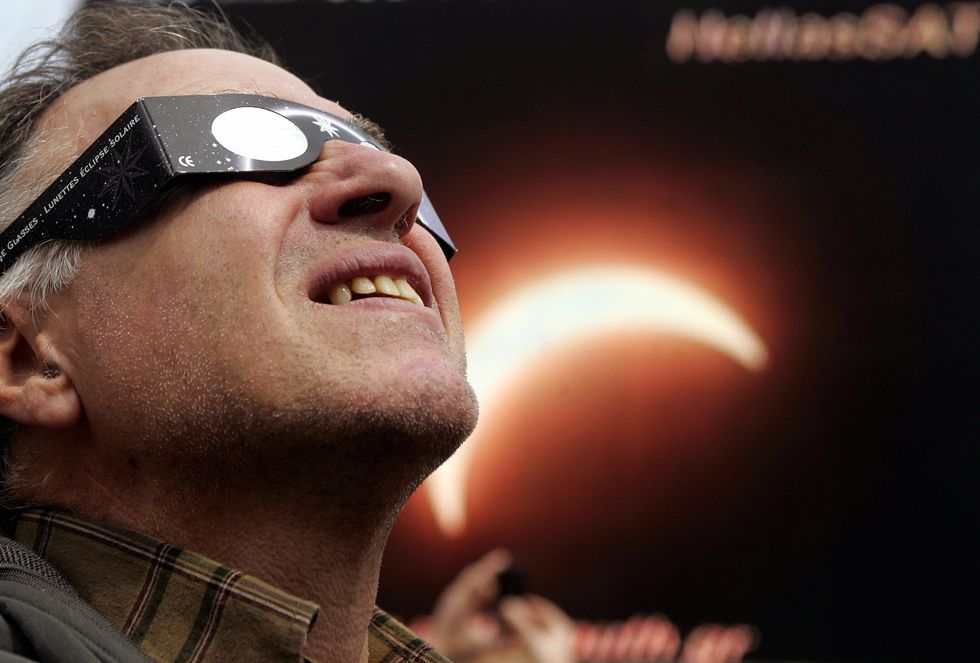A total solar eclipse is to sweep across the US, Canada, and Mexico next week, and whilst the UK will not see a full eclipse of the Sun fully getting blocked by the Moon, some Britons will be able to observe it partially from the comfort of their own homes.
Britons living in six cities in particular will be able to witness the partial solar eclipse on April 8, beginning at 7.52pm (BST) and ending at 8.51pm.
Across the Atlantic, the moon will completely block the sun and darkness will take over for a few seconds.
Whereas in the UK, the moon will only partially block out some of the sun.
Some Britons will be able to observe a partial solar eclipse from the comfort of their own homes
Getty
Britons living in the following cities will be in with the best chance at observing this spectacular phenomenon.
Those residing in and around Manchester, Liverpool, Leeds, Edinburgh, Glasgow, and Cardiff are likely to witness the spectacle.
In order to safely enjoy the phenomenon, observers are being cautioned against looking directly at the sun with naked eyes.
Sunglasses are not enough either; one must use protective specialised eclipse glasses.
LATEST DEVELOPMENTS:
A cheaper alternative is to make a pinhole projector. This is done by making a hole in a piece of card, holding it up to the Sun and onto a piece of paper behind the card. The shape of the sun will be projected onto the piece of paper.
Those not living in one of the six cities can tune into Nasa’s live YouTube stream, with coverage lasting from 6.00pm until 9.00pm.
The next solar eclipse visible from London will be a partial eclipse on 29 March 2025.
A solar eclipse occurs when the moon passes directly in between the Earth and the Sun, blocking out our star and casting part of the world into darkness for a few seconds.

To safely watch the eclipse, special glasses should be used
Getty
The spectacle happens on average between two to five times over a year but they are not always visible to humans as they do not all take place over land.
A total solar eclipse – which will occur over the US, Canada, and Mexico next week – only happens once approximately every 18 months.
For the upcoming event, the total darkness will last as long as four minutes and 28 seconds, double the length of a similar eclipse that occurred in 2017.
Over 40 million people live inside the 115-mile-wide path where the total eclipse will be visible.
Source Agencies


